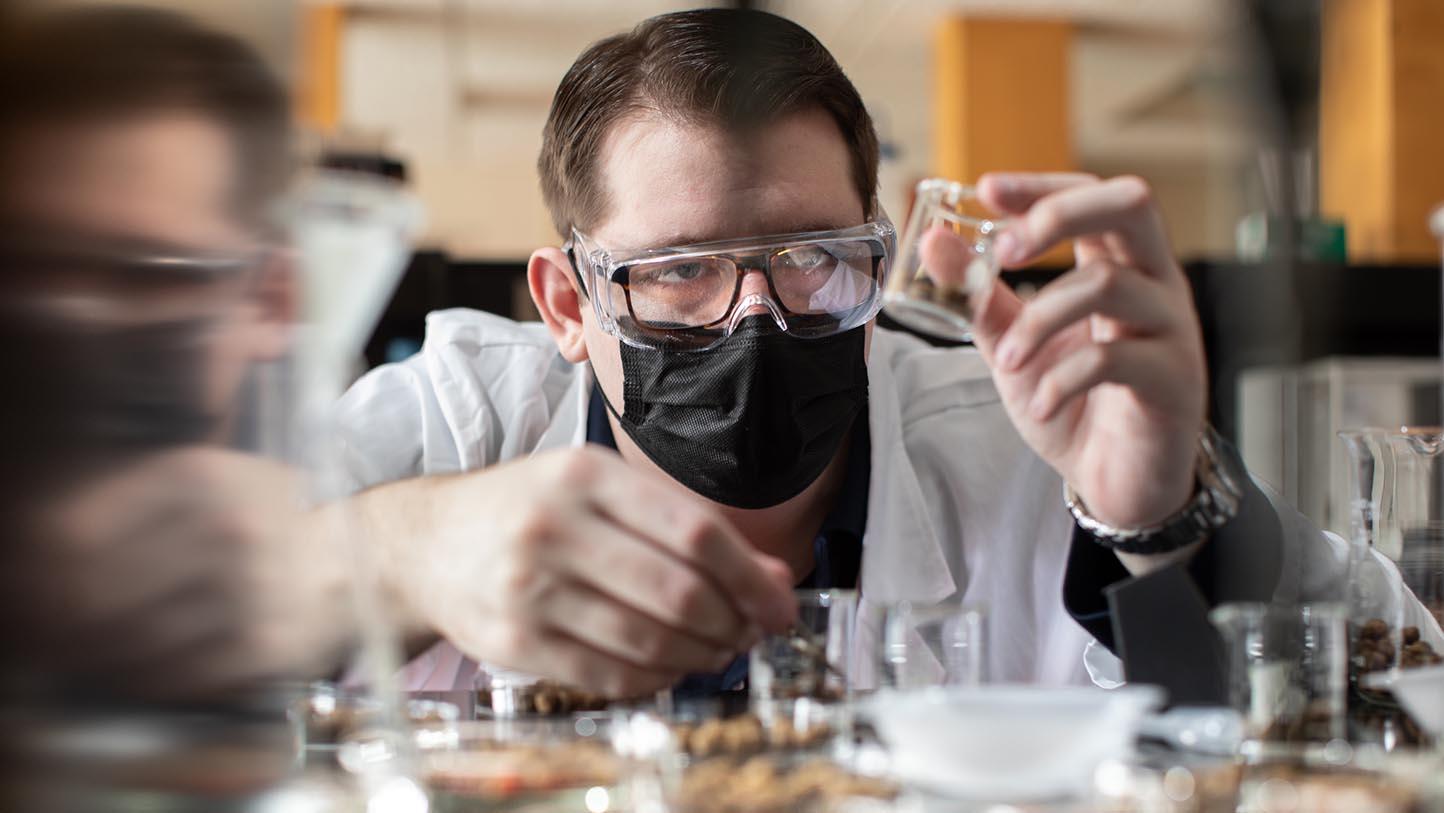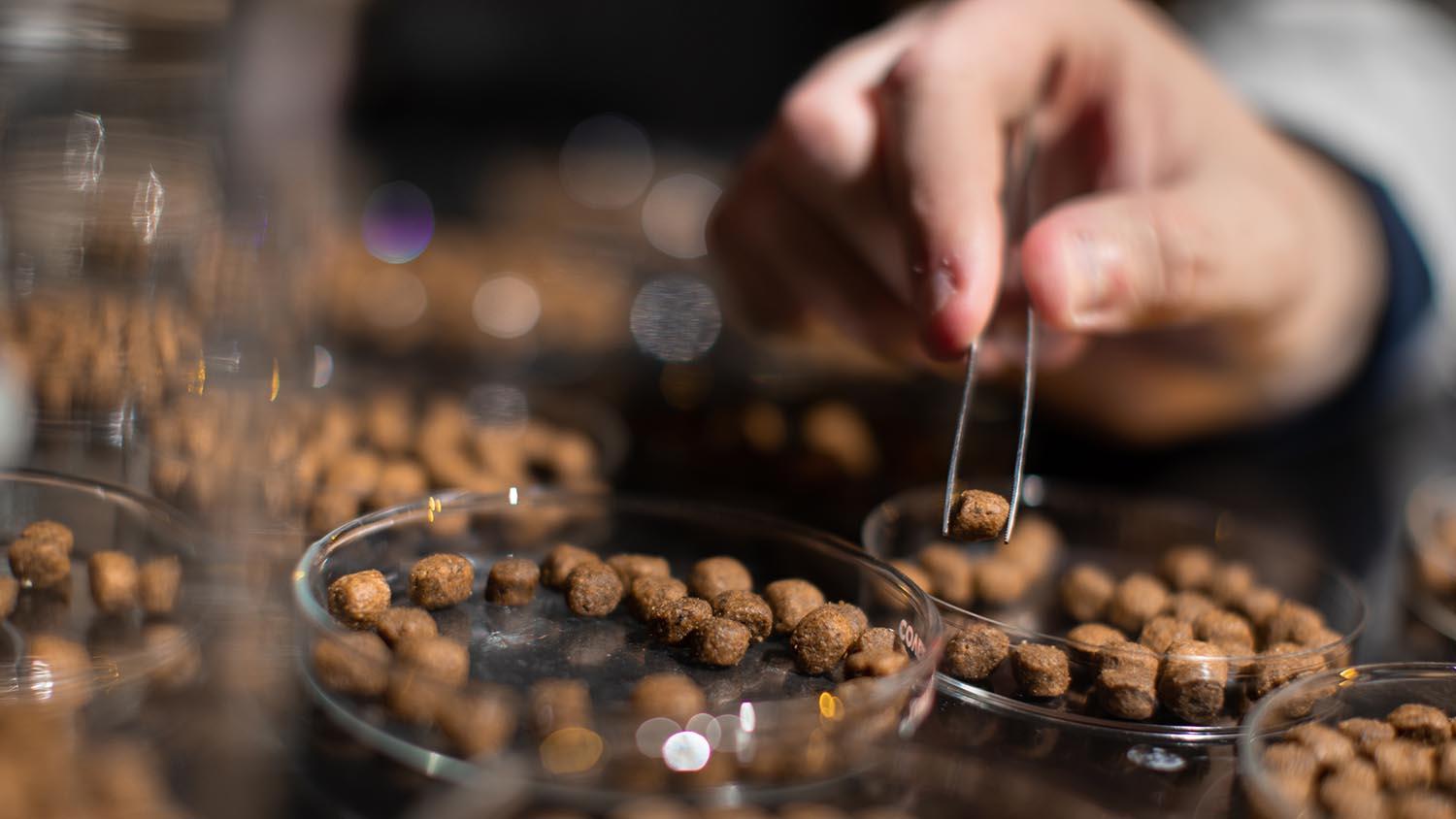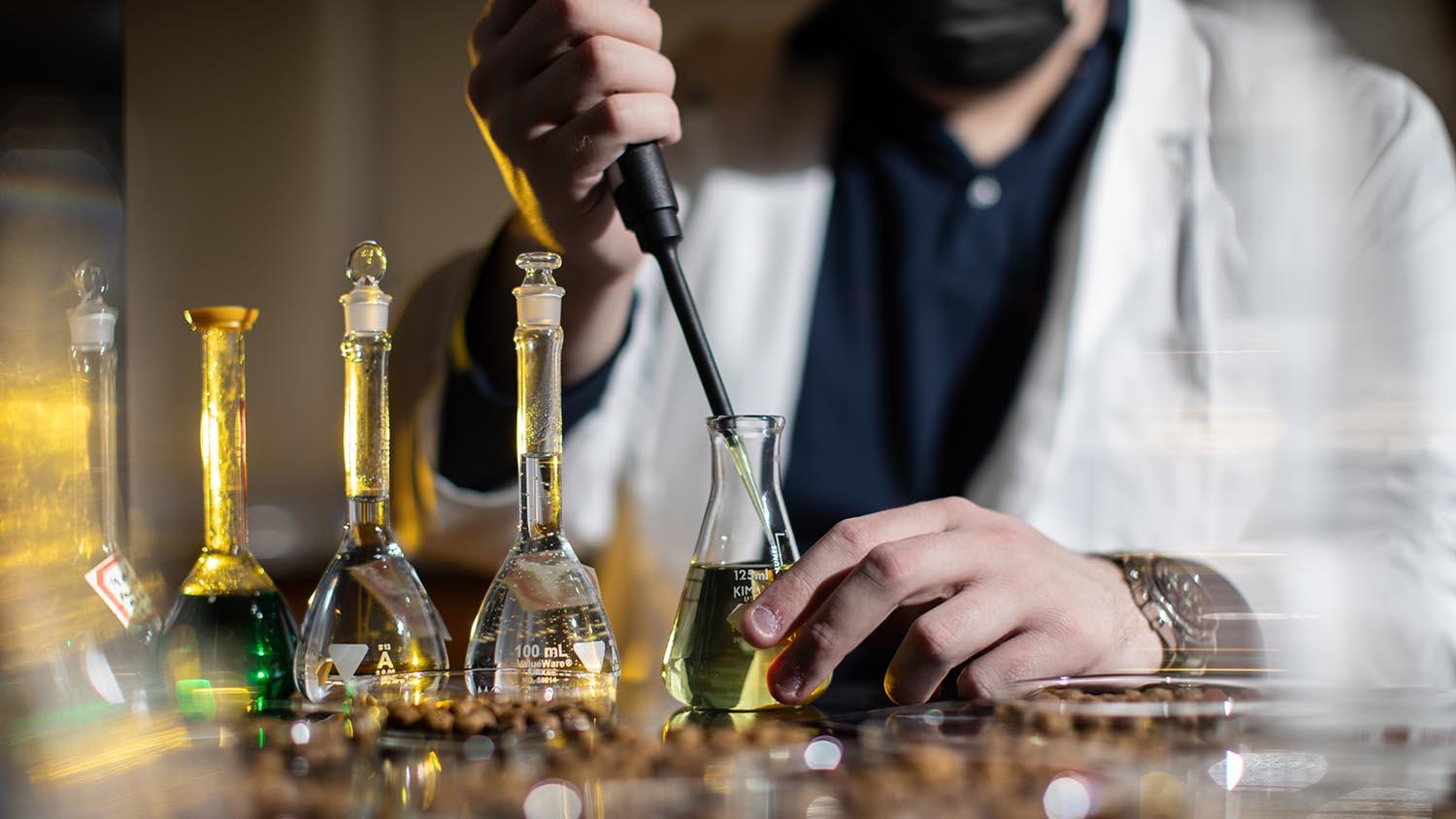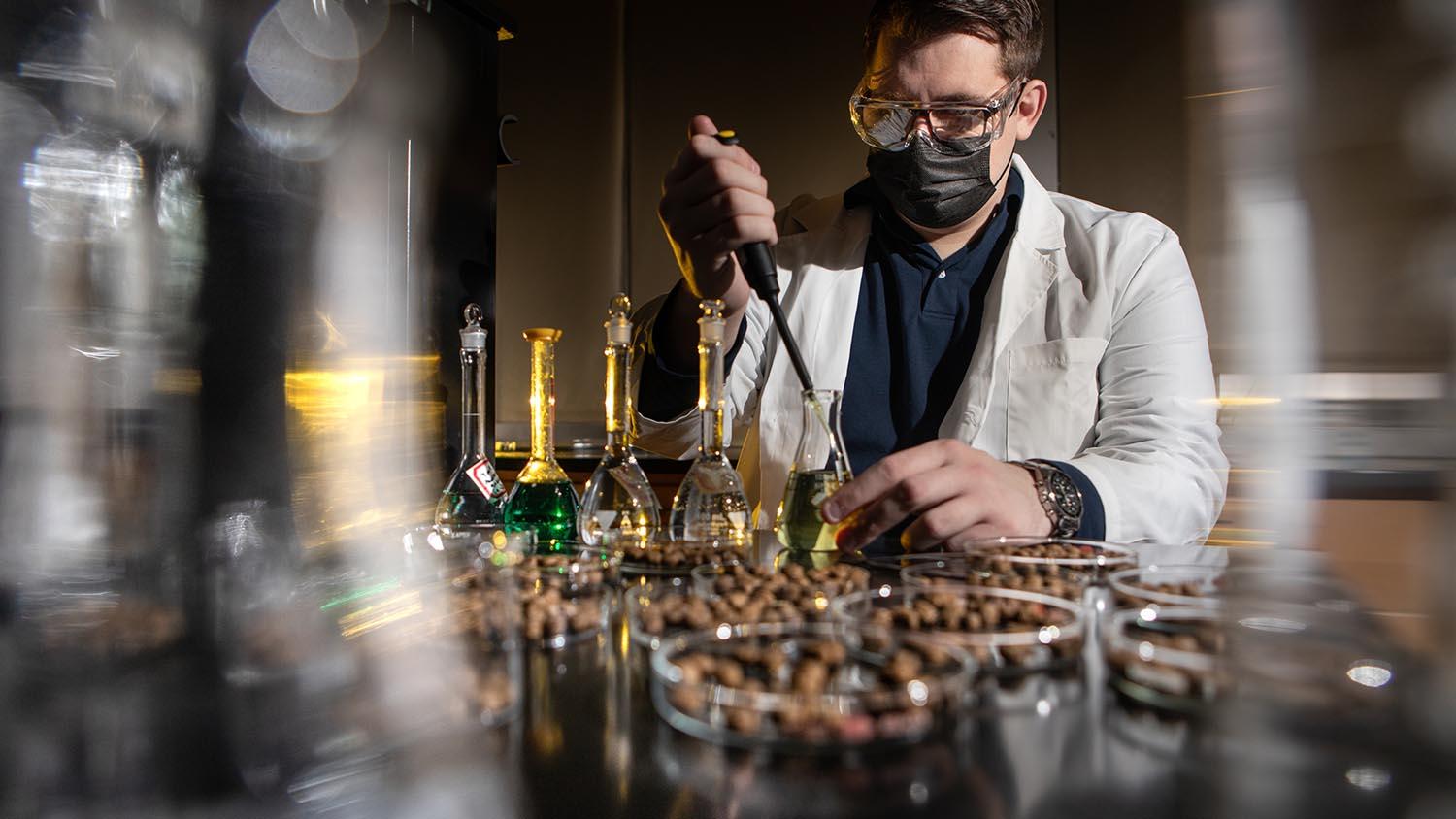Knowledge meets interest for senior chemistry major Tyler Shaffer, who will present his research at Cal U's Strike a Spark conference on April 21.
Engaging curious minds is at the missional heart of the Center for Undergraduate Research at Cal U.
“Research applies to so much of our lives,” said Dr. Azadeh Block, the center’s director. “Your title once you leave Cal U doesn’t have to be ‘research scientist’ in order for research to be a part of your career.“
One of Cal U’s showcase academic events, the Strike a Spark Conference on Research, Scholarship and Creative Activity, will be held virtually this year on April 21.
Visit the webpage for details on the types of eligible student work and important deadlines.
“The goal of the center and our upcoming Strike a Spark conference is to have faculty mentor students in the research process and show our students both how to do it well and also the joy they can get from digging deeper into a subject they enjoy.”
Tyler Shaffer has embraced the concept.
For his senior project, the chemistry major, who plans to pursue his Ph.D. in chemistry at West Virginia University, put his classroom knowledge to use in a project that uses cost-effective methods to detect trace amounts of metals in dog food.
“My adviser, Dr. Gould, suggested it to me, and being someone who loves animals, I thought it was an interesting idea that would be worthwhile to explore.
“It’s the kind of testing that is done by the FDA with an instrument that has a very low detection limit to find very, very trace quantities,” Shaffer said. “The method is expensive, and it’s a hard barrier to entry for a company that wanted to test this themselves.”
Shaffer used an electrochemical device to run a current through samples, using oxidation potentials to determine what metals are present and in what amounts.
“My research uses a cheaper method with a higher detection limit. It’s a little less good, but for the price difference, it’s good enough, and it’s a way for a company to do quality assurance on a product without having to pay tens of thousands of dollars for FDA-grade equipment.”
For a budding analytical chemist, this is an invaluable exercise, said Dr. Gregg Gould, a professor of chemistry and Shaffer’s faculty adviser for his research project.
“So much of what is done in traditional undergraduate chemistry laboratory experiments is an artificial construct,” he said. “That’s not to diminish its virtue as an instructional tool, but in the real world, you don’t work on problems if you already know the solution. It’s not an insignificant transition to go from where the answers are known to something that’s open-ended. The nature of research is not to know the outcome.”
Shaffer is comfortable with the unknowns.
“I like the idea of going into a process not knowing what you have and coming out knowing what’s in it,” he said. “One dream job would be as a radioanalytical chemist, to find out what’s in nuclear waste so it can be treated better.”
Exploration is a key component of an undergraduate education, Gould said.
“A student’s education is about much more than technical knowledge. It’s about learning what interests you in order to pick a career path, and that takes time and reflection.
“Tyler gets that. It’s nice to see him be certain that grad school is the next step.”




